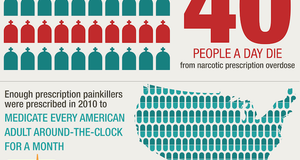Featured Article:A Multi-State Analysis of Correctional Boot Camp Outcomes: Identifying Vocational Rehabilitation as a Complement to Shock Incarceration
By
2012, Vol. 4 No. 09 | pg. 1/3 | »
IN THIS ARTICLE
AbstractThis paper evaluates the outcomes of various correctional boot camp and shock incarceration programs from three U.S. states. It examines the recidivism rates observed among graduates of these programs juxtaposed against their contemporaries who received other custodial and non-custodial sanctions. This paper further analyzes the overall efficacy of these initiatives and offers suggestions for the improvement of juvenile and adult correctional boot camp programs. Finally, it identifies employability as a contributing factor to criminal recidivism and proposes its applicability as a complementary strategy to shock incarceration. It also addresses the challenges to vocational rehabilitation initiatives posed by the perceptions of policy makers and the general public. The goal of most contemporary justice programs is to reduce recidivism rates and curb prison overcrowding. However, incarceration is an expensive form of punishment which has not produced many promising results via rearrest statistics or budget projections. Consequently, legislators and corrections administrators have been forced to seek alternatives through intermediate and non-custodial sanctions (Bhati & Piquero, 2007; Stincomb, 1999). Success therein would subsequently reduce costs and mediate the monetary burden on the justice system inherent to the revolving door paradigm. The concept of diversion was born out of labeling theory and the inherent realization that incarceration can do more harm than good regarding offender rehabilitation. Proponents favor various forms of therapy, counseling, and educational programs which aim to either keep offenders out of the justice system altogether or limit their penetration therein to avoid the stigmatization of being officially adjudicated and convicted. Ultimately, the objective therein is to prevent first-time offenders from becoming repeat career criminals (Davidson, Redner, Blakely, Mitchell, & Emshoff, 1987).American juvenile correctional boot camps were created in the 1980s on the foundation of diversion ideology as a form of intermediate sanction. According to Duwe and Kerschner (2008), boot camps were initially centered on the “shock education” notion that paramilitary regimentation and physical activity could reform offenders by instilling discipline. Additionally, in an effort to combat prison overcrowding, program graduates were afforded earlier release than they would have received under a standard sentence, usually serving the remainder of their term on supervised probation. The projected reduction in recidivism rates and prison populations spurred a nation-wide boot camp craze which resulted in the establishment of over one hundred such programs at every jurisdictional level within the United States by the mid-1990s. With the benefit of hindsight, researchers have since been able to evaluate these programs many years after their initial luster has faded (MacKenzie, Brame, McDowall, & Souryal, 1995). Correctional boot camps seem to have produced disappointing results and many have suffered from publicized incidents of abuse at the hands of staff, leading to several closures in various states (Bottcher & Ezell, 2005; Stincomb, 1999). This paper examines the overall efficacy of correctional boot camp programs. Accordingly, it juxtaposes the recidivism rates of program graduates with those of comparable offenders who received other intermediate sanctions or prison sentences. In accordance with the goals of the contemporary criminal justice system, the paper finally analyzes whether or not boot camps in three U.S. states have improved public safety by producing their intended effects on recidivism rates and prison populations. Juvenile Offenders in CaliforniaAccording to Bottcher and Ezell (2005), the State of California implemented its version of a juvenile boot camp program, LEAD (leadership, esteem, ability, and discipline), in 1992. Two separate facilities were managed by 12 teach, advise, and counsel (TAC) officers, who served as mentors. LEAD participants were carefully selected according to the following criteria; non-serious non-violent juvenile court commitment, minimum age of 16 (later reduced to 14), history or risk of substance abuse, informed consent, medical clearance, and Youthful Offender Parole Board (YOBP) approval. Immediate disqualifiers were also established; eligibility for special mental health programs, recent violent behavior, and non-U.S. citizenship or illegal residency. These selection criteria insured that only the most receptive 14 percent of the male juvenile court intake pool could enter LEAD. Nonetheless, the experiment was short-lived and quietly faded out of existence in 1997. That same year, the California Youth Authority (CYA) released experimental results regarding the LEAD program which affirmed that LEAD wards were actually more likely to be rearrested than control wards; concluding that LEAD did not reduce recidivism. However, these results were released far too early to have considered the entire preponderance of outcome data. Considering follow-up arrest statistics provided by the California Department of Justice (CDOJ), Bottcher and Ezell (2005) affirmed that recidivism data was disproportionally prejudicial toward LEAD graduates. This was attributed to the fact that these participants were ordered into a comparably longer intensive parole term and were more likely to be rearrested for technicalities than control juveniles. Nonetheless, the analysis concluded that only 44 percent of LEAD graduates were subsequently arrested for new criminal offenses within the first year of release, compared to 50 percent of the control group. Moreover, 30 percent of the rearrested LEAD group had been arrested for at least one serious offense within that time, compared to 37 percent of the control group. Second-year statistics affirmed that the LEAD group was rearrested at a rate of 60 percent, compared to 69 percent in the control group. Though the data appear promising at first glance, when all factors were taken into consideration, the rearrest and serious crime rates among both groups were hardly distinguishable. According to the “survival curves,” only 8 percent of each group remained arrest-free between release and the time of the study. The only observable difference between the two groups was that LEAD participants were rearrested at a 4 percent lower rate during the first 1,000 days after release than their control group contemporaries. Beyond that time, the respective statistics for both groups were virtually identical. Essentially, the only quantifiable benefit to the CYA LEAD program was that participants were incarcerated for a comparably shorter period of time, albeit within a more expensive program. Regardless, whatever time, effort, and funding that may have been saved was quickly sucked into the LEAD vacuum via the vessels of intensive parole, increased supervision, and aftercare programs. As a result, California’s juvenile boot camp program was no more effective at reducing recidivism nor saving money than standard custodial sanctions. LEAD’s failure can be attributed primarily to its lack of effective treatment, poorly managed and hastily produced design, and the TAC officers’ gravitation toward confrontation in lieu of mentorship in accordance with CYA directives. The root of the issue is evident in the fact that CYA has long-since fallen from its position as a progressive treatment-oriented agency and has adopted a preference for punitive measures (Harris, 2007). Adult Boot Camp in PennsylvaniaAccording to Kempinen and Kurlychek (2003), the Pennsylvania State Motivational Boot Camp Program was established in 1990 as a hybrid comprised of a militaristic exercise regimen and a multi-layered rehabilitation curriculum intended to reduce prison overcrowding and recidivism. Pennsylvania’s design deviated from the traditional model in that it implemented a rehabilitation program centered on education, life skills training, and cognitive-behavioral/substance abuse therapy. In order to be eligible for the six-month program, male and female adult offenders must have been sentenced to no more than two years in a state prison, under the age of 35, and not have been convicted of certain violent or major drug trafficking offenses. The sentencing judge must have recommended each candidate and the Pennsylvania Department of Corrections was given final admission approval authority. Such parameters guaranteed selective admittance into the participant pool, which produced respective graduation rates or 66 to 80 percent, even though offenders were permitted to leave voluntarily. This was particularly surprising given that participants in the Pennsylvania program were generally from among a more chronic, serious, and high-risk offender population than were admitted to most traditional boot camps. The operational distinction within the Pennsylvania program was that it focused on individual rehabilitative needs with particular emphasis on substance abuse, relapse prevention, and anger/stress management. Of every 18-hour day (7 days per week), 2.5 hours were dedicated to group therapy sessions, often led by representatives from organizations such as Alcoholics- and Narcotics-Anonymous. Notably, the program also incorporated education and employment training as research has substantiated that stable employment could reduce recidivism (Kempinen & Kurlychek, 2003; Nally, Lockwood, Knutson, & Ho, 2012). Approximately 92 percent of program participants who had not previously graduated from high school received their GED during their terms in the boot camp. Those with high school diplomas participated in camp maintenance and community service projects (Kempinen & Kurlychek, 2003). As with any correctional boot camp, traditional or not, the rate of recidivism among its graduates was the ultimate test for Pennsylvania’s program (MacKenzie, Brame, McDowall, & Souryal, 1995). Kempinen and Kurlychek (2003) affirmed in their study that graduates of the program were actually more likely to recidivate than the prison control group; 44 versus 39 percent. However, hidden in the recidivism data was a partial explanation for the increase. The boot camp group was 8 percent more likely to commit a technical violation while on parole, for reasons similar to those observed in California. Notably, the program group received 3 percent fewer new crime convictions than the control. The authors attributed a portion of the disappointing data to the fact that younger offenders are inherently more likely to recidivate. Nonetheless, they affirmed that the rate of recidivism in boot camp graduates decreased proportionally to the severity of their original offenses. For example, the recidivism rate for drug offenders was 18 percent less than for property crime offenders. Employment status was another significant factor; unemployed offenders were more than twice as likely to recidivate. While repeat offenders are inherently at a high risk for recidivism, the authors concluded that graduates of the Pennsylvania program who had prior arrest records were 71 percent less likely to reoffend when compared to those released from prison. It is important to note that program graduates were not significantly more likely to commit major parole violations even though, or perhaps because, they were under comparably greater scrutiny and supervision. Though the program did not produce demonstrable reductions in recidivism, its effect on repeat offenders was certainly encouraging. With regard to prison overcrowding, the Pennsylvania program produced admirable results. On average, a term in boot camp reduced an offender’s sentence by one full year. Since boot camp graduates did not reoffend at a rate significantly higher than the control group, the program was deemed to be fiscally sound and did not expose society to any quantifiably greater risk.Continued on Next Page » Suggested Reading from Inquiries Journal
Inquiries Journal provides undergraduate and graduate students around the world a platform for the wide dissemination of academic work over a range of core disciplines. Representing the work of students from hundreds of institutions around the globe, Inquiries Journal's large database of academic articles is completely free. Learn more | Blog | Submit Latest in Criminology & Criminal Justice |


















